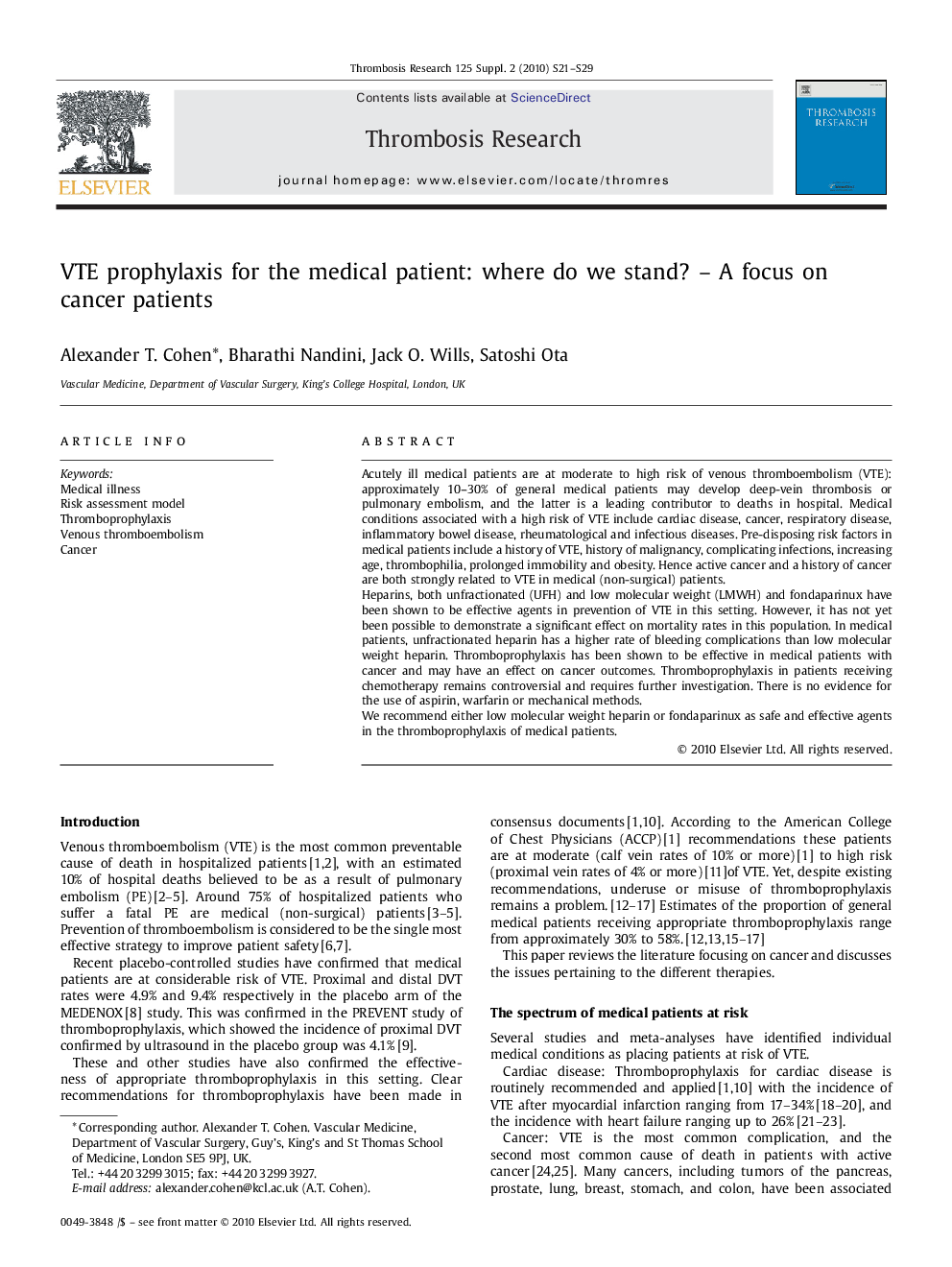| Article ID | Journal | Published Year | Pages | File Type |
|---|---|---|---|---|
| 3027960 | Thrombosis Research | 2010 | 9 Pages |
Acutely ill medical patients are at moderate to high risk of venous thromboembolism (VTE): approximately 10–30% of general medical patients may develop deep-vein thrombosis or pulmonary embolism, and the latter is a leading contributor to deaths in hospital. Medical conditions associated with a high risk of VTE include cardiac disease, cancer, respiratory disease, inflammatory bowel disease, rheumatological and infectious diseases. Pre-disposing risk factors in medical patients include a history of VTE, history of malignancy, complicating infections, increasing age, thrombophilia, prolonged immobility and obesity. Hence active cancer and a history of cancer are both strongly related to VTE in medical (non-surgical) patients.Heparins, both unfractionated (UFH) and low molecular weight (LMWH) and fondaparinux have been shown to be effective agents in prevention of VTE in this setting. However, it has not yet been possible to demonstrate a significant effect on mortality rates in this population. In medical patients, unfractionated heparin has a higher rate of bleeding complications than low molecular weight heparin. Thromboprophylaxis has been shown to be effective in medical patients with cancer and may have an effect on cancer outcomes. Thromboprophylaxis in patients receiving chemotherapy remains controversial and requires further investigation. There is no evidence for the use of aspirin, warfarin or mechanical methods.We recommend either low molecular weight heparin or fondaparinux as safe and effective agents in the thromboprophylaxis of medical patients.
